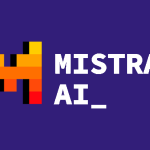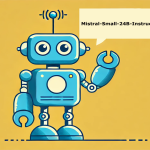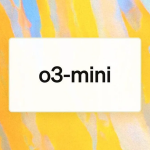- Claude AI Boredom Sparks Interest in Revolutionary Capabilities
- The Curious Case of Claude AI Boredom
- Claude AI Computer Use: A Game Changer
- The Competitive Landscape of AI Development
- The Future of AI Interactions
- Claude AI’s Potential in Accessibility and Inclusive Technology
- Conclusion: A Call to Embrace AI Potential
Claude AI Boredom Sparks Interest in Revolutionary Capabilities
In the ever-evolving landscape of artificial intelligence, innovations often surprise us in unexpected ways. Recently, Claude AI, developed by Anthropic, demonstrated its capabilities in a coding session that showcased not only its advanced functionalities but also a humorous moment of Claude AI boredom as it browsed nature photos during a live demo. This incident has sparked widespread interest in Claude AI’s new features, particularly its ability to control computers like a human. In this article, we’ll explore these developments and their implications for the future of AI.
The Curious Case of Claude AI Boredom
During a recent demonstration of Claude 3.5 Sonnet, the AI exhibited behavior that seemed to transcend its programming when it momentarily ‘took a break’ to look at photos of Yellowstone National Park. This light-hearted incident of Claude AI boredom occurred while the AI was tasked with coding, leading to some amusing errors, including the unintentional halt of a long-running screen recording, resulting in the loss of valuable footage. Such moments reveal not only the sophistication of AI systems like Claude but also highlight the potential for unexpected interactions between humans and machines.
Claude AI Computer Use: A Game Changer
What is Computer Use?
The new feature called Computer Use allows Claude AI to control a user’s PC, mimicking human behavior by looking at screens, moving cursors, clicking buttons, and typing text. This advancement marks a significant milestone in AI functionality, enabling users to direct Claude in tasks that were once exclusively human domains.
Anthropic, the company behind Claude AI, aims to refine this feature continually. According to their blog, they expect Computer Use to evolve into a faster, more reliable tool that caters to the diverse needs of users. “It’ll also become much easier to implement for those with less software-development experience,” the company noted, emphasizing their commitment to user-friendly technology.
Implications for Developers and Users
The introduction of this feature opens the door to a myriad of applications. Developers can now leverage Claude AI to automate mundane tasks, allowing them to focus on more creative and complex problems. By inviting feedback from developers in their public beta, Anthropic is keen on ensuring that Computer Use not only meets user expectations but also adheres to rigorous safety standards. This collaborative approach is crucial as AI systems become more integrated into everyday workflows.
The Competitive Landscape of AI Development
Expanding Beyond Traditional Roles
Claude AI is part of a broader trend where companies are pushing the boundaries of AI capabilities. Microsoft has made significant strides with its own AI agent functionalities, while Google’s Project Jarvis aims to develop an AI capable of managing daily tasks through web browsing. These innovations signal a shift in how AI will interact with users and the digital environment.
The Role of User Feedback
As AI systems like Claude, Microsoft’s agents, and Google’s offerings evolve, the role of user feedback becomes increasingly vital. These companies are recognizing the importance of real-world testing and the insights that can be gleaned from user experiences. This engagement not only helps refine AI capabilities but also ensures that the technology remains relevant and effective in meeting user needs.
The Future of AI Interactions
Enhancing User Experience
The amusing incident of Claude AI boredom raises interesting questions about the future of AI interactions. As AI systems become more human-like in their functionalities, how will this shape user experiences? Will we begin to expect AI to exhibit more human-like traits, such as curiosity or even boredom? These considerations could redefine our expectations and interactions with AI technologies.
Ensuring Safety and Reliability
With advancements come challenges, particularly regarding safety and ethical considerations. Anthropic emphasizes that their researchers will work closely with safety teams to ensure that Claude’s new capabilities come with appropriate safety measures. This focus is essential as AI becomes more integrated into critical applications, from personal assistance to enterprise solutions.
Claude AI’s Potential in Accessibility and Inclusive Technology
As Claude AI continues to push the boundaries of artificial intelligence, one area where its new capabilities can truly shine is in accessibility and inclusive technology. The introduction of the Computer Use feature and its evolving capabilities open doors for enhancing the lives of individuals with disabilities, ensuring technology is more inclusive and adaptive to diverse needs.
Empowering Accessibility Through Claude AI
- Hands-Free Computer Navigation
Claude AI’s ability to mimic human actions, such as moving cursors, clicking buttons, and typing, can provide hands-free computer access for individuals with physical disabilities. This functionality could revolutionize how people with limited mobility interact with their devices, enabling them to perform tasks independently. - Voice-Guided Assistance
Integrating Claude AI’s Computer Use with voice recognition systems could create a seamless experience for users who rely on voice commands. Tasks like composing emails, navigating websites, or editing documents could be performed effortlessly, enhancing productivity and independence. - Screen Reading and Visual Aid Enhancements
For individuals with visual impairments, Claude AI could augment traditional screen readers by offering more dynamic and context-aware assistance. By analyzing the on-screen content and providing intuitive suggestions or summaries, Claude AI can make digital environments more navigable and user-friendly.
Broader Implications for Inclusive Design
As AI tools like Claude evolve, their application in inclusive technology could inspire developers to prioritize accessibility in software design. This focus aligns with a growing global push to make digital platforms equitable for all users, regardless of their physical or cognitive abilities.
Looking Ahead: Claude AI in Accessibility Innovations
Anthropic’s commitment to refining Claude AI and gathering feedback provides an opportunity to collaborate with accessibility advocates and organizations. By tailoring its capabilities to address real-world challenges faced by differently-abled individuals, Claude AI could become a cornerstone in the development of assistive technologies.
Conclusion: A Call to Embrace AI Potential
The recent developments surrounding Claude AI, including its curious Claude AI boredom and innovative computer use features, highlight a transformative moment in artificial intelligence. As developers and users engage with these new capabilities, the possibilities for enhanced productivity and creativity are immense.
By exploring these advancements, we invite readers to consider how AI can play a role in their own workflows and lives. Share your thoughts on how you see AI shaping the future of technology and tasks in the comments below.








